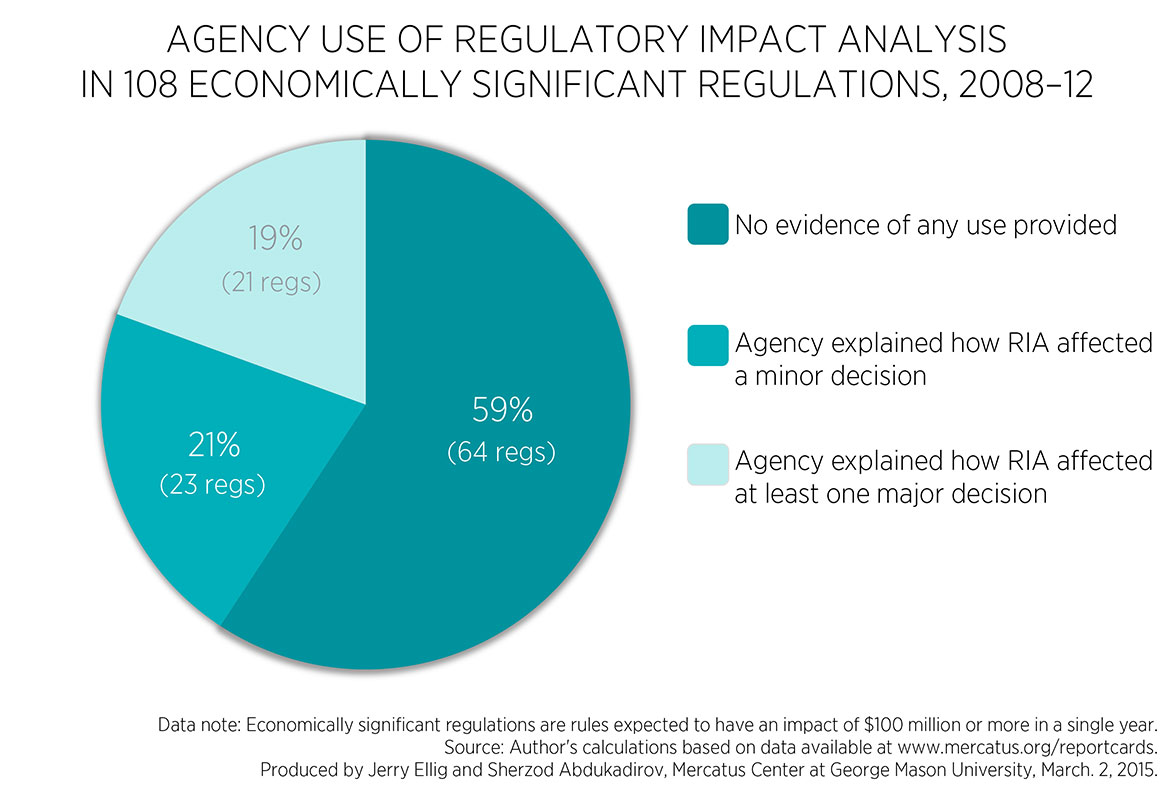- | Regulation Regulation
- | Data Visualizations Data Visualizations
- |
Agency Analysis Rarely Used to Inform Regulatory Decisions
Reasonable people may disagree about how much and what type of regulation is justified, but we should all be able to agree that government owes the public a clear explanation of how it’s making regulatory decisions.
Since 2008, the Mercatus Center’s Regulatory Report Card series has evaluated the quality of executive branch agencies’ Regulatory Impact Analyses for major regulations and the extent to which agencies explain how they used the analyses in their decisions. A good Regulatory Impact Analysis raises the odds that regulators will create a regulation that solves a real problem at a reasonable cost.
One Report Card criterion asks whether the agency claimed, or appeared to use, any part of the analysis to guide decisions. As the chart below demonstrates, agencies often fail to explain how the Regulatory Impact Analysis helped inform their decisions.
This disconnect between analysis and decisions occurs because Regulatory Impact Analysis is currently required only by executive orders, not statutes. If an administration decides that political priorities are more important than solving real problems at an acceptable cost, agencies can ignore their own analyses. A stronger enforcement mechanism may be needed. Legislation requiring economic analysis of proposed regulations, for example, could allow judges to invalidate regulations unaccompanied by a thorough economic analysis and an explanation of how the agency used that analysis.
Reasonable people may disagree about how much and what type of regulation is justified, but we should all be able to agree that government owes the public a clear explanation of how it’s making regulatory decisions.


